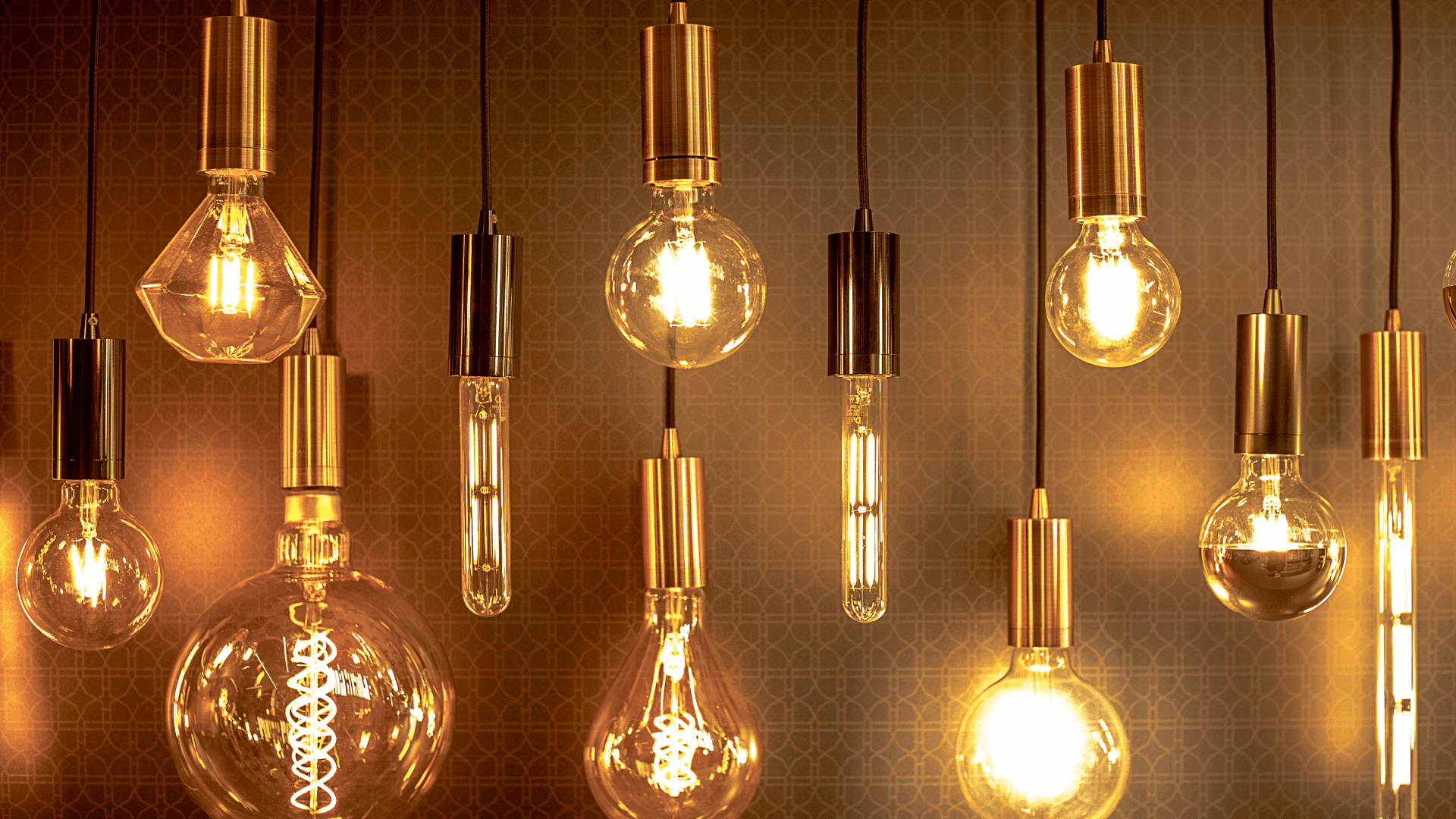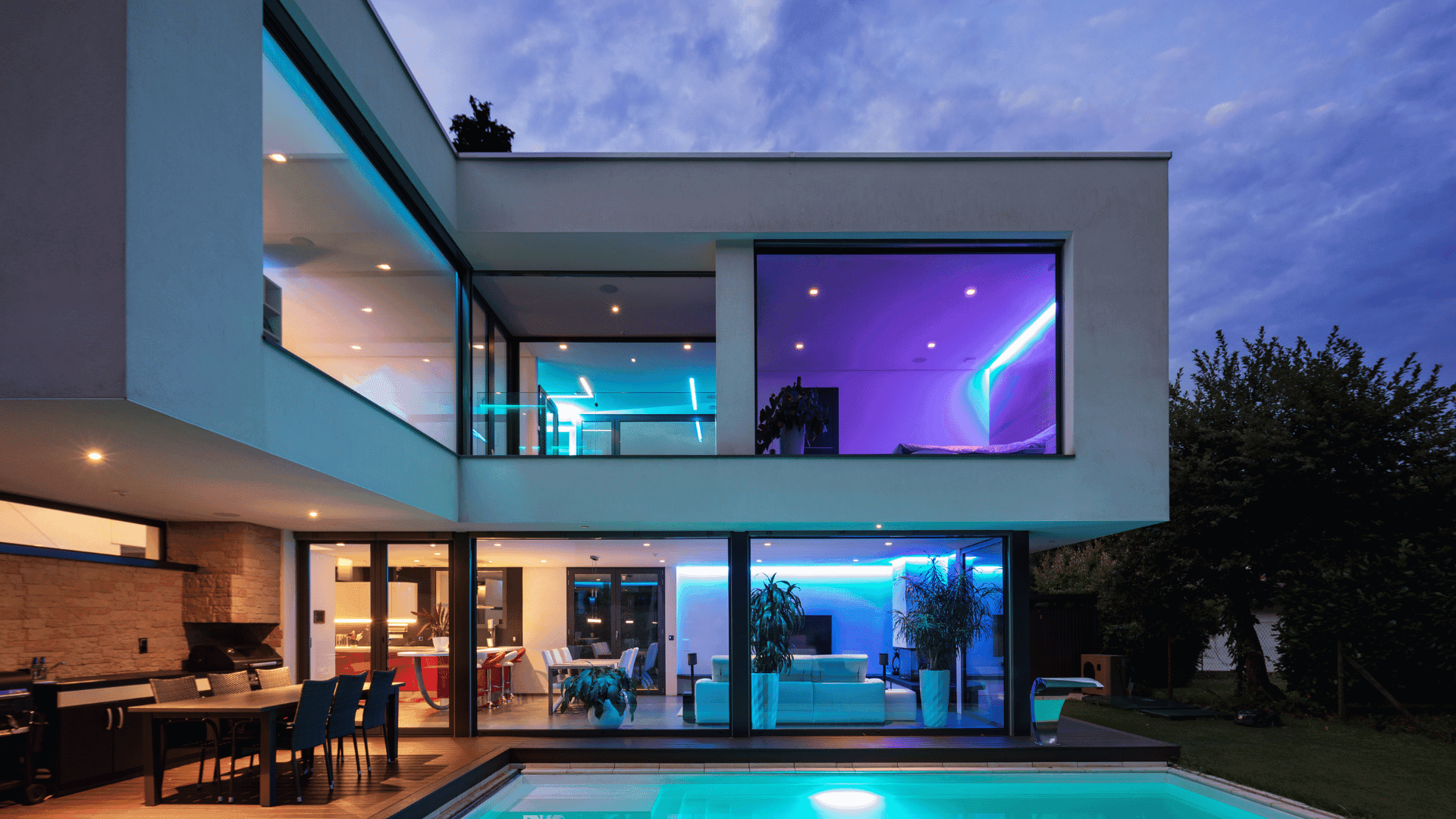The Unseen Side of Fixed Lighting: When 'Not Dimmable' Makes Sense
Published at 11/26/2023
Alexander Hack
14 mins read

Imagine this: You're setting the table for a romantic dinner at home. Everything looks perfect, except for the blindingly bright overhead light that refuses to tone down. You wish you could adjust its intensity to match the mood, but alas, it's a 'not dimmable' light. This situation highlights a common frustration many face with non-dimmable lighting. While dimmable lights offer the flexibility to create ambiance and adjust brightness to suit various tasks, why would anyone opt for non-dimmable lighting? In this blog, we'll explore the limitations, unexpected benefits, and scenarios where 'not dimmable' lighting is actually the ideal choice.
Table of Contents
The Challenges of Fixed Intensity Lighting
The Rigidity of 'Not Dimmable' Lights:
One of the major drawbacks of non-dimmable lighting is its inflexibility. Unlike their adjustable counterparts, 'not dimmable' lights offer no control over their brightness level. This rigidity can lead to environments that are either too bright or too dim for certain activities. Imagine trying to relax in a living room bathed in the stark brightness of an overhead light that can't be toned down, or attempting to focus on a detailed task under insufficient lighting.
Consequences of Inappropriate Lighting Conditions:
The impact of non-adjustable lighting goes beyond mere inconvenience. It can create harsh and unflattering conditions, leading to discomfort and even eye strain. For instance, a study room with a fixed bright light might seem ideal for reading, but over time, the excessive brightness can cause eye fatigue, affecting productivity and comfort. Conversely, a dimly lit kitchen with non-dimmable lights might lack the necessary illumination for safe and efficient cooking.
Real-World Scenarios Favoring Dimmable Options:
Consider situations like a home theater where the mood is crucial, or an art studio where lighting needs change based on the medium being used. In these cases, the ability to adjust lighting levels becomes not just a convenience, but a necessity for the optimal use of the space. Dimmable lights offer the versatility that 'not dimmable' lights simply can't match.
Deciphering the Appeal of Non-Dimmable Lighting
Debunking Cost Myths:
A common misconception is that non-dimmable lights are significantly cheaper than their dimmable counterparts. While it's true that the initial cost of 'not dimmable' bulbs is often lower, the long-term value should be considered. Dimmable lights can lead to energy savings over time due to their adjustable nature. However, for those on a tight budget or in situations where lighting needs are constant and predictable, the upfront savings of non-dimmable lights can be appealing.
Cost Analysis of 'Not Dimmable' vs Dimmable Lights:
- Initial cost for non-dimmable lights is generally lower.
- Long-term energy savings can be higher with dimmable lights due to adjustable intensity.
- Maintenance costs for dimmable lights can be higher due to more complex components
Navigating Limited Choices:
In certain scenarios, the choice of 'not dimmable' lighting isn't a choice at all but a necessity. Some types of light fixtures or specific lighting technologies are not compatible with dimming. For example, older models of LED lights or certain compact fluorescent lamps (CFLs) do not support dimming. This limitation often guides homeowners and decorators towards non-dimmable options, particularly when retrofitting older fixtures or adhering to specific aesthetic or design requirements.
Avoiding the Pitfalls of Dimming:
While dimmable lights offer flexibility, they also come with their own set of challenges. Incorrect installation or pairing with incompatible dimmer switches can lead to issues like flickering, buzzing, or reduced bulb life. In environments where lighting is frequently adjusted, the wear and tear on dimmable systems can be significant. For public spaces, rental properties, or areas where user interference needs to be minimized, 'not dimmable' lighting offers a straightforward, low-maintenance solution.
Compatibility and Maintenance:
- Certain lighting technologies and fixtures are only compatible with non-dimmable bulbs.
- Non-dimmable lights typically require less maintenance due to fewer components.

A Comprehensive Guide to the Best Smart Lightbulbs of 2024
A Comprehensive Guide to the Best Smart Lightbulbs of 2024
Discover the best smart LED lights of 2024 in our comprehensive guide. Dive into the world of innovative home illumination with reviews on top products like Nanoleaf, Yeelight, and Wyze Labs. Learn about smart home compatibility, WiFi connectivity, and creative lighting solutions to transform your living space. Whether you're seeking mood lighting, vibrant color options, or energy-efficient bulbs, our guide covers the essentials for the perfect smart home experience.
Embracing the Simplicity of Non-Dimmable Lighting
Ideal Scenarios for 'Not Dimmable' Lights:
While the versatility of dimmable lights is often lauded, there are instances where 'not dimmable' lighting shines. In environments where consistent and uniform illumination is key, non-dimmable lights are the go-to choice. For instance, in commercial settings like retail stores or art galleries, consistent lighting ensures that products and artworks are uniformly lit, providing a reliable viewing experience. Similarly, in industrial or safety-critical environments, like manufacturing plants or emergency rooms, the consistent output of non-dimmable lights ensures a stable and predictable work environment.
Designing with Fixed Lighting in Mind:
In the realm of interior design, choosing the right type of lighting is crucial. 'Not dimmable' lights can be used strategically to create a sense of stability and simplicity in a space. For example, in minimalist or contemporary design schemes, the use of uniform lighting can complement the aesthetic and bring focus to specific design elements without the distraction of varying light levels. Furthermore, for spaces designed for concentration and focus, such as libraries or study areas, the constant light level of non-dimmable fixtures can aid in reducing distractions and enhancing productivity.
Selecting the Right Non-Dimmable Lights:
Choosing the appropriate 'not dimmable' lights involves considering factors like color temperature, lumens, and energy efficiency. It's important to select bulbs that provide adequate brightness and a color temperature suitable for the intended space. For example, warmer lights are typically used in living spaces for a cozy atmosphere, while cooler lights are preferred in workspaces for clarity and focus.
- Color Temperature:
- Warm White (2700K – 3000K): Ideal for living rooms and bedrooms.
- Cool White (3500K – 4100K): Suitable for kitchens and bathrooms.
- Daylight (5000K – 6500K): Best for workspaces and reading areas.
- Recommended Lumens:
- Living Room: 1,500 – 3,000 Lumens
- Kitchen: 5,000 – 10,000 Lumens
- Bedroom: 1,000 – 2,000 Lumens
- Bathroom: 4,000 – 8,000 Lumens
- Energy Efficiency:
- LED bulbs are the most energy-efficient.
- Incandescent bulbs have lower energy efficiency.
- CFLs offer moderate energy efficiency but may not be dimmable.
Best Dimmable and Non-Dimmable Lights of 2024
Best Dimmable Lights of 2024:
- Philips LED Frosted A19 Soft White Light 2700K (Best Overall): Known for its efficient and long-lasting performance, this Philips LED range is an excellent choice for those seeking reliable, high-quality dimmable lighting.
- Sylvania LED A19 Light Bulb (Best Bang for the Buck): Offering a balance of affordability and quality, these bulbs are a practical option for budget-conscious consumers.
- Philips Hue A19 E26 Smart Bulb (Best Smart Bulb): These smart bulbs stand out for their advanced features, including compatibility with various smart-home technologies and voice activation capabilities.
- Other Notable Mentions:
- Best Color-Changing: Lumiman WiFi Smart LED Light Color-Changing Bulbs.
- Best Vintage: Ascher E26 Dimmable Vintage LED Edison Bulbs.
- Best for Kitchens: Cree Lighting A19 Pro Series LED Bulbs.
- Best for Bathrooms: GE Relax HD Soft White 60W LED Light Bulbs

Smart LED Strips Unveiled: Top Picks on Amazon & Expert Solutions for Seamless Integration
Smart LED Strips Unveiled: Top Picks on Amazon & Expert Solutions for Seamless Integration
Enhance your smart home with the best smart LED strips of 2024! This blog covers everything from basic setup to advanced integration, troubleshooting, and more. Learn how to connect Philips Hue to Alexa, Google Wifi, and Home Assistant, and discover the best Philips Hue apps and multi-user capabilities. Create a wake-up light routine, synchronize Philips Hue with Netflix, and optimize scenes with Nanoleaf Shapes Hexagon Smarter Kit. Find the perfect smart LED strip for your needs and budget, and take your smart home experience to the next level!
Best Non-Dimmable Lights of 2024:
- Philips LED Frosted A19 Soft White Light 2700K: While these bulbs offer excellent illumination and energy efficiency, they are not compatible with dimmer switches, making them a top choice for 'not dimmable' lighting needs.
- Ascher E26 Dimmable Vintage LED Edison Bulbs: Despite their vintage charm and energy efficiency, these bulbs are not suitable for dimming, making them a great non-dimmable option for those seeking a retro aesthetic.
2024's Top Lighting Picks: Dimmable vs Non-Dimmable Comparison:
Illuminate Your Space: Best Use Cases for 2024's Leading Light Bulbs
- Philips LED Frosted A19 Soft White Light: Ideal for general home use, providing a soft white light suitable for most rooms.
- Sylvania LED A19 Light Bulb: A versatile option for various settings, balancing cost and quality.
- Philips Hue A19 E26 Smart Bulb: Perfect for tech-savvy users, enhancing smart home setups.
- Ascher E26 Vintage LED Edison Bulbs: Best for creating a retro or vintage atmosphere in spaces like cafes or themed rooms.
Conclusion: Illuminating Choices - Embracing the Right Lighting for Your Space
As we have explored, while dimmable lighting offers versatility and the ability to tailor light to our needs and moods, there's a significant place for 'not dimmable' lighting in our lives. It's not just about the cost or the lack of technology but about the specific requirements and design choices that define each space. Non-dimmable lighting provides consistency, simplicity, and often, a more straightforward solution for many lighting scenarios.
For those renovating, building, or just sprucing up their space, considering the role of lighting is crucial. It's not just a choice between dimmable and non-dimmable but understanding what each option brings to your space. Whether it's the uniform brightness of 'not dimmable' lights in a professional setting or the mood-setting capabilities of dimmable lights in a home theater, each has its place.
In conclusion, we encourage you to think about the lighting in your own spaces. How does it affect your mood, your work, your leisure? Could a change in lighting, be it dimmable or 'not dimmable', enhance your experience? We invite you to share your thoughts and experiences with lighting choices in your own life. Remember, the right lighting can transform a space from just functional to fantastic.